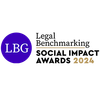What’s the use? The different approaches to the patentability of use claims in the UK and at the EPO

There are two main types of use claim that are utilised in patent applications. The first type, which are the subject of this article, are also referred to as purpose-limited product claims. These are generally of the form “substance X for use in achieving effect Y."
The second type are usually worded “the use of substance X to achieve effect Y”. These claims are generally interpreted as being equivalent to a process claim, i.e. a process of achieving effect Y using substance X.
Claims of the first type are often utilised in patent applications covering pharmaceutical and chemical inventions. They can give additional coverage for novel products, as well as providing patent protection for new uses of known products.
Case law for use claims
One of the more well-known pieces of European Patent Office (EPO) case law in the field of chemistry is the decision relating to Mobil Oil’s friction reducing additive (G 2/88). This case involved the applicant seeking patent protection for the new use of a known product via use claims, and essentially established the EPO’s precedent for such claims.
The facts of this case were as follows; Mobil had obtained a European patent having claims directed to certain borated glycerol hydroxyesters. These compounds were said to be useful as additives in lubricating oils.
During the nine-month post-grant opposition period, an opposition to the grant of Mobil’s patent was filed by Chevron. In their opposition, Chevron argued that Mobil’s claims lacked novelty and/or inventive step over an earlier US patent. This prior patent disclosed oil compositions that included claimed compounds. In the US patent, the compounds were said to be added for their effect as corrosion inhibitors.
The opposition hearing, and the arguments for the appeal
In the opposition hearing, Chevron was successful in achieving revocation of Mobil’s European patent. Mobil filed an appeal against this decision. During the appeal, a new (auxiliary) set of claims was filed by Mobil. Instead of being directed to the compounds per se, this auxiliary claim set contained four claims directed to the use of the compounds “as a friction reducing additive in a lubricant composition”.
A hearing on the appeal was held before one of the EPO’s Technical Boards of Appeal in the Chemistry section. In relation to the auxiliary “use” claim set, the Technical Board of Appeal decided that there were some important points of law that needed to be resolved. They, therefore, referred three questions to the EPO’s Enlarged Board of Appeal (the highest appeal board at the EPO). Of these questions, the critical one for the current article was:
Is a claim to the use of a compound for a particular non-medical purpose novel for the purpose of Article 54 EPC, having regard to a prior publication which discloses the use of that compound for a different non-medical purpose, so that the only novel feature in the claim is the purpose for which the compound is used?
That is, in relation to the specifics of this case, is a claim to the use of certain compounds as a friction reducing additive in a lubricant composition novel over the earlier use of those compounds as corrosion inhibitors in a lubricant composition?
The appeal decision
The Enlarged Board of Appeal answered this question in the affirmative, i.e. such a claim would be novel. They stated that the new use related to the attainment of a new technical effect. The fact that this technical effect had not been previously made available to the public meant that the claimed invention was novel. Thus, in this case, the fact that the prior use of the compounds as corrosion inhibitors could have inherently also resulted in a reduction in friction does not prevent the later patenting of the friction reducing use, provided that no-one was aware of the friction reduction. This has therefore been the long-standing practice of the EPO in relation to new (non-medical) uses for known compounds.
The different approaches of the UKIPO and the EPO to use claims
This issue is one of a limited number of areas where the UK Intellectual Property Office (UKIPO) does not follow the EPO’s practice in relation to the examination of novelty. In contrast, the UKIPO view is that: “a claim to, for example, the use of a known substance as an additive to perform a particular function, is not novel if this function was inherent (though unrecognised) in the prior art use of that substance”. This practice is set out in the UKIPO’s guidance for examining patent applications relating to chemical inventions.
This means that if Mobil had been pursuing a UK patent application, the UKIPO would have decided that claims directed to the use of the compounds as friction reducing additives (i.e. those granted by the EPO) would have lacked novelty over the earlier use as corrosion inhibitors.
Our advice
In practice, any patent applicants pursuing use claims where there is a risk of an inherent (but unrecognised) earlier use should consider pursuing patent protection covering the UK via a European patent application at the EPO. However, even with this approach, there remain some unanswered questions. For example, would a UK court invalidate such a use claim as granted by the EPO? Also, what would constitute the infringement of such a claim, i.e. where the effect is inherently achieved by the prior art use? Would it be the case that Mobil’s competitors could continue to sell the compounds for use as corrosion inhibitors provided that they don’t also say that they reduce friction? Further case law is awaited on this topic.
Speak to one of our specialist attorneys to find out more about use claims, particularly in the context of pharmaceutical and chemical inventions, and their application at the UKIPO and EPO.


















